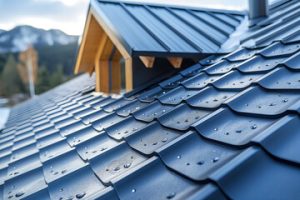Professional Ranger Plumbing Company experts use a variety of techniques and technologies to address clogs and blockages effectively. These methods range from mechanical snaking and hydro jetting to chemical treatments.
Regular drain cleaning is a crucial maintenance service for businesses. It helps them maintain proper hygiene, avoid costly repairs, and comply with health and safety regulations.

Expertise
Drains and pipes are intricate systems that often experience problems that can only be resolved by experienced plumbing professionals. These technicians know how to effectively use a variety of tools to remove stubborn clogs and blockages from toilets, bathtubs, showers, and sinks. They can also diagnose and fix any underlying issues that may be contributing to these problems. For example, a clogged kitchen sink may result from food particles or grease accumulation, while a blocked bathroom drain is typically caused by hair clumps and soap residue.
One of the best ways to prevent drain clogs is to recognize the early warning signs and act quickly. Common symptoms include slow drainage, strange noises, and foul odors. Recognizing these signals can help you avoid more serious and expensive damage down the line.
In addition, you should consider implementing regular drain cleaning routines to ensure that your drains stay clear. This includes flushing your drains with hot water at least once per week and regularly clearing out strainers. You can also try using homemade drain cleaners instead of chemical ones. These solutions are biodegradable and won’t harm your pipes.
Finally, you can invest in an auger, which is a long, flexible rod that can reach deep into your pipes to dislodge even the most stubborn clogs. This tool is especially useful for clearing hard-to-reach areas such as behind toilets and in the basement.
Lastly, you can also opt for gas or air-powered drain cleaners, which are similar to pressure washers but are able to blast clogs out of your pipes at high speeds. These are ideal for removing difficult-to-reach blockages and can be a great alternative to chemical drain cleaners, which often have negative environmental impacts.
Advanced Equipment
Licensed plumbers have the equipment to handle a wide range of plumbing issues, including clogged drains and sewer lines. They use high-powered machines like water jets and hydro jetting to cut through and wash away stubborn blockages. They also have specialized drain cameras and acoustic listening devices to locate clogs and leaks in underground pipes. If your home has natural gas appliances, it will use carbon monoxide and combustible gas detectors to prevent safety hazards.
A gurgling or bubbling smell in your house is one of the most common signs that you need to call a professional for drain cleaning services. This buildup of toxins and waste in your pipes is unsafe for you and your family and will only get worse the longer you delay the process.
Getting your drains regularly cleaned can also reduce wear and tear on your pipes, extending their life. It can also identify any problems early and help you save money on costly repairs down the line. Professionals can use a press tool to create precise bends in copper and soft metal tubing without kinking or crimping.
Safety
Regular drain cleaning services help prevent blockages, overflows, and other damage. They also ensure that your plumbing system works efficiently, reducing the risk of expensive repairs and maintenance work. Clogged drains are a breeding ground for bacteria, dirt, and other contaminants that can affect indoor air quality. These pollutants can also pose health risks for your family and pets. By hiring a professional plumber to clean your drains, you can rest assured that they are fully cleaned and operating properly.
Using advanced tools such as video inspection systems, professional plumbers are able to diagnose and solve complex and stubborn clogs. These tools can also be used to detect any underlying issues, such as corrosion or leaking pipes. They can then offer comprehensive solutions that address the root cause of your clogs and resolve them for good. In contrast, DIY methods rely on basic tools such as plungers and drain snakes, which can only remove a small amount of debris and fail to tackle complex clogs.
Another safety measure that plumbers take is wearing the appropriate PPE and following the 3 C’s: consideration, caution, and care. This includes reading the applicable safety instructions and data sheets on the chemicals that they may be working with. They also make sure to wear protective gloves, a face mask, and eye protection when handling hazardous materials.
Foul odors caused by clogged drains can contaminate your building’s interior and lead to poor air quality for employees and customers. Regular commercial drain cleaning eliminates these odors, resulting in a fresher and more pleasant environment. Clean drains also reduce water pressure, preventing overexertion and premature wear on your plumbing system’s pipes and fixtures.
Time Efficiency
Clogged drains and sewage backups are disruptive for homes and businesses, and they require immediate attention. Professional plumbers have the tools, equipment, and training necessary to clean pipes quickly and thoroughly. They also prioritize safety and follow strict protocols, ensuring that their work is done correctly the first time.
Plumbing experts encounter a wide variety of drainage problems daily, giving them extensive experience in dealing with clogs and blockages of all types. This enables them to identify the root cause of a problem and implement solutions that are tailored to the unique characteristics of each system, minimizing damage to plumbing infrastructure and the environment.
Dedicated professionals understand how to effectively use advanced techniques like hydro jetting, mechanical drain augers (or snakes), and camera inspections to clear stubborn clogs and keep pipe walls healthy. They also provide preventative maintenance services to help homeowners avoid costly emergency repairs in the future.
When choosing a drain cleaning service, opt for one that offers a transparent service agreement and warranty. These details will help you to determine whether the provider is a legitimate and reliable choice. Moreover, it is important to choose a service that provides eco-friendly and safe products instead of chemical drain cleaners. Regularly using biodegradable drain cleaners can reduce the build-up of hair, grease, soap scum, and other residues in pipes and keep them functioning optimally.
Clogged drains in food service establishments can emit foul odors that affect the dining experience and create unappetizing working conditions for employees. Regular drain cleaning services help businesses maintain hygiene standards, avoid expensive repairs, and comply with health and safety regulations. Additionally, they extend the lifespan of drain systems and enhance operational efficiency.
Preventative Maintenance
Drains and sewer lines inevitably get clogged over time, and they should be cleaned regularly to prevent serious problems from arising. Plumbing professionals know what to look for and can catch any potential issues early on. This allows them to repair them before they turn into major repairs or even a total pipe replacement job.
In addition to the fact that clogged drains are costly to repair, they can also cause a lot of damage to your home’s plumbing system and even your health. When debris like hair, dirt, and grime builds up in your pipes, it can lead to a blockage that stops water from flowing through properly. This can result in flooded bathrooms, overflowing toilets, and more. Clogged drains can also allow sewage, bacteria, and other contaminants to make their way into your home, which poses a major health risk for you and your family.
Clogged drains and sewer lines are usually caused by food particles, cooking grease, and those so-called “flushable” wipes. Many homeowners choose to use commercial drain cleaners to solve the problem, but these chemical products can actually damage your piping and make the clog worse over time. Professional plumbers can safely and quickly clear away all clogs, leaving your pipes fully functional.
If you have noticed that your drains are running slowly, or if you’re noticing a foul smell wafting through your home, it may be time to call for professional drain cleaning services. Our team is available 24/7, so we can always provide you with prompt and efficient service. Call us today to learn more about our drain cleaning services and how we can help you keep your home’s plumbing systems working properly for years to come.





